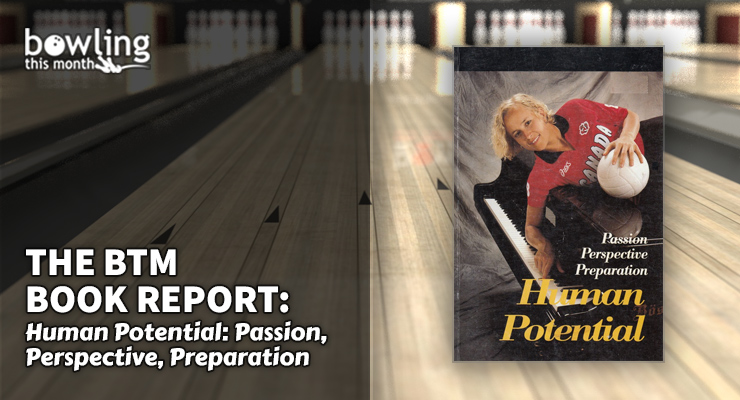Botterill, Patrick, and Sawatzky’s Human Potential: Passion, Perspective, Preparation is a mental training book divided into four relatively easy-to-read sections. The first section covers some mental game basics and provides readers with a simple step-by-step process for improving any mental skill. The following three sections discuss the mental skills and psychological tools related to perspective, passion, and preparation. While this 1990s-era book isn’t very well-known outside of Canada, it offers many interesting ideas that can be applied to improving your bowling mental game.
First, the authors lay out the foundation of the book, which is that achieving one’s potential is dependent on mental skills. Then, unlike many mental books that simply discuss skills, they introduce a process for improving skills, much like what you’d consider when looking to improve a physical skill. The process involves seven steps: assess, set goals, visualize, practice, monitor, automate, and enjoy.
It stands to reason that goal-setting and visualization are key topics in the book, not just as mental skills, but as steps toward improving all skills. The authors also make sure to point out that virtually every situation in life can provide an opportunity to work on mental skills. These mental skills that are built in other areas can then be applied to improving your performance in your sport of choice.
The perspective section of the book discusses the topics of rationality, self-worth, and some pitfalls that many athletes face about trying to be perfect. This is very similar to the “games people play” concept that was introduced in The Inner Game of Tennis.
The book’s third section, the passion section, dives into the key mental tools of goal-setting and visualization. Their takes on goal-setting are unique compared to those used by the popular SMART acronym that is today often used to describe goal-setting. They instead introduce the five Ds:
- Dream: Start with a vision of everything that can possibly go right.
- Development: Work with coaches to improve specific areas that need it.
- Daily: Decide on things you can do every day to support your dream/goal.
- Dignity: To keep perspective, work on self-acceptance and enjoy the experience, regardless of the outcomes.
- Dynamics with those involved: Remember that your goals are also influenced by, and affect, those around you.
Finally, in the preparation section, we see more mental tools and a brief discussion on the difference between being assertive and being aggressive. While aggression is generally in reference to those around you, being assertive is an internal state. This distinction is an important part of maintaining poise and confidence.
Application to bowling
Like any mental book, this one provides some valuable tips that bowlers ...
This article is only available to Bowling This Month subscribers. Click below to get instant access to this article and all of our other premium instructional content.
Subscribe to Bowling This Month
Already a Bowling This Month subscriber? Click here to log in.
